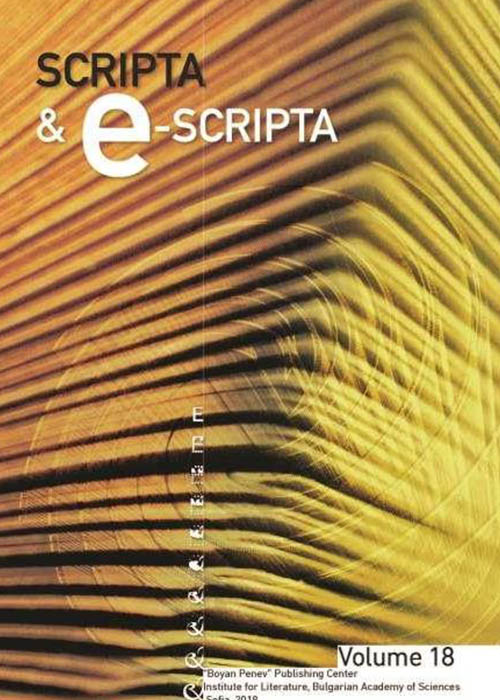Notes on the Date of the Tenth-Century Codex Suprasliensis

- Author(s): Elena Kotseva
- Subject(s): Language and Literature Studies //
-
Published by: Institute for Literature BAS

- Print ISSN: 1312-238X
- Summary/Abstract:
The proposed notes to the chronology of the Codex Suprasliensis were provoked by the "Rediscovery" of this manuscript in the project of UNESCO (2009-2011), Institute for Literature, BAS. The electronic edition of the codex gave grounds of a new analysis, and with much more sophisticated technology and expectation to create a new annotated dictionary. Most of the authors of the publications in anthology “Rediscovery: Bulgarian Codex Suprasliensis of 10th century” (Sofia, 2012) suggested an earlier composition and production of the Codex Suprasliensis ‒ about the 970s. The author argues that the model of the handwriting of the Codex Suprasliensis lies on the basis of both the high and the low Cyrillic uncial. Her analysis includes details of the outline of graphemes and decoration of the Codex Suprasliensis as compared to the most important early Cyrillic manuscripts. The author also seeks terminus ante quem / post quem for the character set compared with epigraphic materials. She emphasizes that the handwriting of the Codex Suprasliensis remains unique – until a model of the early Cyrillic script is reconstructed, a model that depends probably on the early Greek tradition/ canon of graphemes. There is a good prospect for future research, because of the study of the corpus of the Slavonic liturgical books (reading menaia, triodia, apostoloi and others) nowadays: this gives good grounds for further development of a Slavic Cyrillic paleography and codicology.
Journal: Scripta & e-Scripta vol. 12, 2013
-
Page Range: 24-40
No. of Pages: 16
Language: English - LINK CEEOL: https://www.ceeol.com/search/article-detail?id=17989
-
Elena KotsevaAssoc. Prof., PhD Sofia St Kliment Okhridski University Cyrillo-Methodian Research Centre, Bulgarian Academy of Sciences, Sofia, Bulgaria
-
SUBJECT: Language and Literature Studies //KEYWORDS:
-